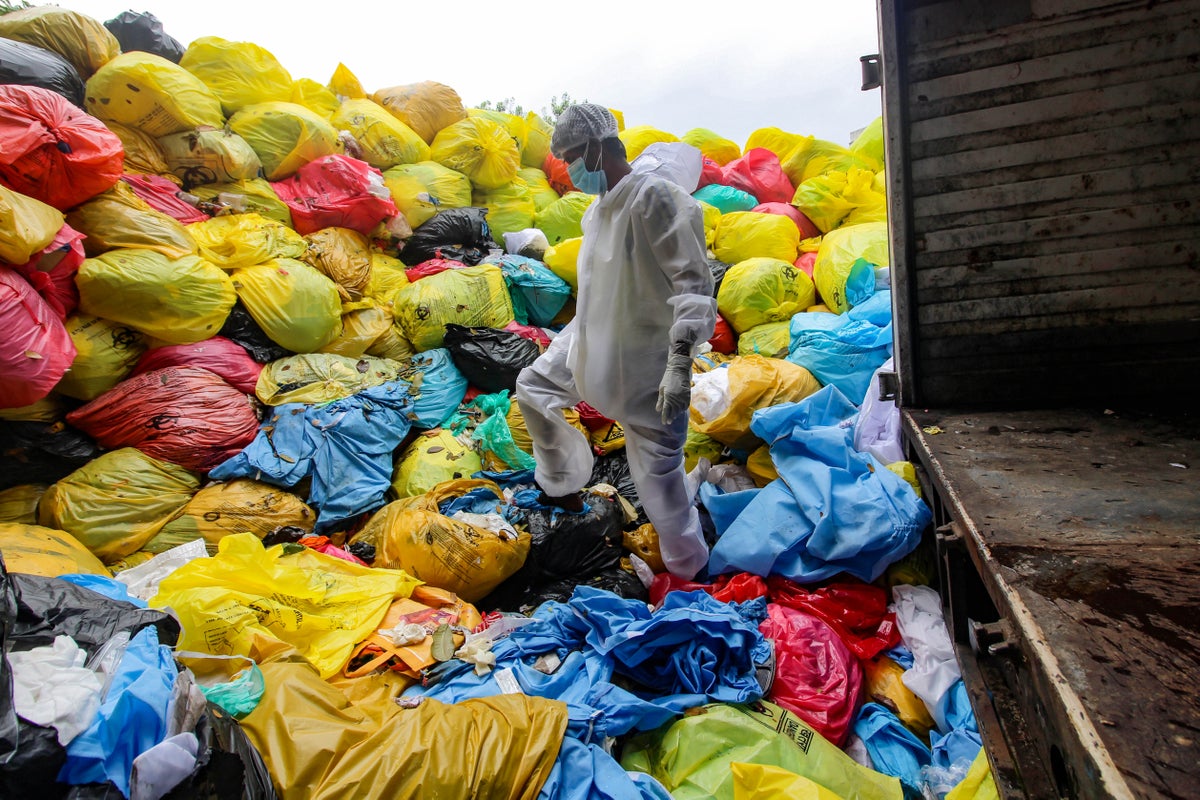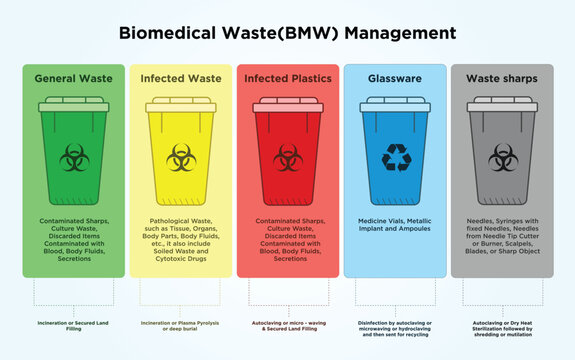Strategic Medical Waste Disposal Solutions: Supporting Safety and Sustainability
Compliance and Rules for Medical Garbage Disposal
Compliance and laws for clinical garbage disposal play a vital role in making certain the security and well-being of both medical care professionals and the basic public. Proper monitoring of clinical waste is vital to prevent the spread of infections, secure the environment, and keep public health. This calls for adherence to particular standards and protocols set forth by regulatory companies and bodies. These laws include numerous aspects, consisting of the category and segregation of clinical waste, appropriate storage and managing treatments, as well as transportation and disposal approaches. By following these guidelines, healthcare facilities can reduce the threat of contamination and potential damage to people and the setting. This short article will certainly discover the value of compliance and offer a summary of the vital regulations governing medical garbage disposal.
Importance of Conformity
The value of compliance with guidelines for medical waste disposal can not be overemphasized. Proper disposal of clinical waste is important for making sure the safety and health of healthcare workers, clients, and the basic public. Medical waste, which consists of products such as utilized needles, infected gloves, and biomedical waste, can pose severe health risks otherwise taken care of and dealt with properly.
Conformity with guidelines ensures that medical waste is handled in a manner that decreases the potential for direct exposure to harmful materials and contagious diseases - medical waste removal service. It helps prevent the spread of infections, such as HIV, hepatitis B and C, and various other bloodborne microorganisms. Conformity also plays a vital duty in protecting the setting by avoiding contamination of water resources, soil, and air
Failing to follow regulations can cause serious effects for medical care facilities, including fines, lawsuit, and damage to their online reputation. In addition, non-compliance may jeopardize the health and wellness of healthcare employees, people, and the community.
Conformity with regulations for medical garbage disposal requires adherence to particular standards and protocols. These may include appropriate partition, packaging, labeling, and storage of clinical waste. It also includes using authorized disposal techniques, such as landfilling, autoclaving, or incineration, relying on the sort of waste.
Regulatory Agencies and Bodies
Governing companies and bodies play an essential function in looking after conformity with regulations for medical garbage disposal. These companies are in charge of setting criteria, standards, and methods to ensure the risk-free and appropriate handling of medical waste. They keep an eye on and implement compliance to safeguard public health and wellness and the atmosphere.
Among one of the most noticeable governing firms in the USA is the Epa (EPA) The EPA is in charge of regulating the storage space, transport, treatment, and disposal of medical waste. They develop standards for waste generators, transporters, and treatment centers to adhere to, making certain that all essential preventative measures are taken to avoid the spread of illness and contamination.
Another vital regulative body is the Occupational Security and Health Management (OSHA) OSHA sets laws and criteria to secure workers from occupational threats, consisting of those related to clinical waste. WasteX Medical Waste Disposal. They offer standards for the secure handling and disposal of medical waste to shield workers in medical care facilities
Along with these federal firms, individual states additionally have their own regulative bodies that oversee clinical waste disposal. These companies may have their own details policies and needs that should be adhered to.

Category and Partition of Medical Waste
To make sure appropriate monitoring of medical waste, it is important to identify and segregate it according to established protocols and guidelines. medical waste removal. Classification and segregation play an essential role in minimizing the risk of infection, shielding the environment, and making sure the safety and security of healthcare workers and the general public
Medical waste is categorized into various classifications based upon its possible hazard level. These categories include contagious waste, pathological waste, sharps waste, pharmaceutical waste, chemical waste, and contaminated waste. Each group calls for specific handling, transportation, disposal, and storage methods to reduce the risk of exposure and contamination.
Segregation of medical waste involves dividing various kinds of waste at the resource. This procedure makes certain that waste with various danger degrees is not blended, reducing the capacity for cross-contamination and making disposal procedures much more efficient. Proper partition is attained through making use of color-coded tags and containers, which aid health care workers and waste management personnel deal with each type and recognize of waste appropriately.
Along with classification and partition, medical care facilities must additionally stick to regional, state, and federal laws relating to medical waste management. These regulations lay out certain demands for storage, transport, treatment, and last disposal of medical waste, ensuring compliance and keeping public health and wellness and safety.
Correct Storage and Handling Treatments
Appropriate storage and handling treatments play a critical duty in making sure the certified and safe monitoring of clinical waste. Medical waste, that includes products such as utilized syringes, contaminated handwear covers, and ended medications, can posture severe health and ecological dangers if not managed correctly. It is vital for health care centers and various other generators of medical waste to execute rigorous storage and dealing with protocols.
To start with, clinical waste should be kept in sturdy, leak-proof containers that are specifically designed for this objective. These containers ought to be classified with the universal biohazard sign and the words "clinical waste" to plainly suggest the components. In addition, the containers must be maintained securely near to protect against any potential leak or splilling.
Additionally, it is necessary to set apart different sorts of clinical waste to avoid cross-contamination. Sharps, such as needles and scalpels, must be saved in puncture-resistant containers to decrease the risk of injuries - WasteX Medical Waste Disposal. Chemical waste, such as solvents and disinfectants, ought to be kept individually from other types of medical waste to avoid chain reactions or harmful direct exposures

Transportation and Disposal Approaches
Medical care facilities need to make sure the secure transport and proper disposal of their clinical waste to abide with policies and protect public health and wellness. Transportation and disposal approaches play a crucial duty in stopping the spread of contagious illness and minimizing the ecological effect of medical waste.
To deliver medical waste, medical care facilities should utilize puncture-resistant and watertight containers that are labeled with the biohazard icon. These containers ought to be firmly sealed to avoid any leakage during transport. Additionally, medical care facilities need to establish methods for the transportation procedure, including making use of specialized lorries and trained employees.
As soon as the medical waste reaches the disposal facility, it undergoes different techniques of therapy. One typical approach is incineration, which includes melting the waste at heats to ruin virus and reduce the volume of waste. An additional technique is autoclaving, which makes use of steam and pressure to decontaminate the waste. After treatment, the waste is normally sent out to a landfill or a waste-to-energy facility for final disposal.
It is vital for health care centers to function with licensed and permitted waste management companies to ensure correct transport and disposal of clinical waste. These business have the expertise and sources to take care of clinical waste securely and in compliance with policies.
Conclusion
In conclusion, conformity with policies for medical garbage disposal is of utmost value to guarantee public health and safety and security. Regulative companies and bodies play a critical role in applying these laws. Correct category and partition of clinical waste, as well as complying with suitable storage space and dealing with treatments, are vital to protect against contamination and the spread of illness. Sufficient transportation additional info and disposal approaches must be implemented to lessen ecological influences. In general, adherence to conformity and laws is required to effectively handle medical waste.
Clinical waste, which includes products such as made use of needles, polluted handwear covers, and biomedical waste, can position significant health dangers if not handled and disposed of appropriately.
These groups include contagious waste, pathological waste, sharps waste, pharmaceutical waste, chemical waste, and contaminated waste.Segregation of medical waste entails separating different kinds of waste at the resource. Proper partition is attained via the use of color-coded tags and containers, which aid healthcare workers and waste monitoring employees identify and manage each kind of waste properly.
Chemical waste, such as disinfectants and solvents, must be saved separately from other types of medical waste to stop chemical responses or unsafe direct exposures.